 Originally
established as the Northern Michigan Asylum in 1885, it grew from
the single “Kirkbride Building,” now known as Building 50, to a
sprawling complex of 60 acres of buildings on an even larger plot of
land. The original concept was to treat mental patients with quiet
country life in a self-sustaining community involving extensive farming
operations that were finally discontinued in the 1950s. The complex was
closed in 1989, fell into disrepair and was scheduled for demolition,
which was avoided due to the efforts of local preservation groups. Now
known as The Village,
it is undergoing an extensive and ambitious project of adaptive reuse,
with buildings being restored and renovated to accommodate restaurants
(Trattoria Stella being the first), art galleries, an artisan bakery, a
micro-brewery, a hotel and of course, Left Foot Charley. Black Star
Farms also plans to put a tasting room in the same building as Trattoria Stella.
Originally
established as the Northern Michigan Asylum in 1885, it grew from
the single “Kirkbride Building,” now known as Building 50, to a
sprawling complex of 60 acres of buildings on an even larger plot of
land. The original concept was to treat mental patients with quiet
country life in a self-sustaining community involving extensive farming
operations that were finally discontinued in the 1950s. The complex was
closed in 1989, fell into disrepair and was scheduled for demolition,
which was avoided due to the efforts of local preservation groups. Now
known as The Village,
it is undergoing an extensive and ambitious project of adaptive reuse,
with buildings being restored and renovated to accommodate restaurants
(Trattoria Stella being the first), art galleries, an artisan bakery, a
micro-brewery, a hotel and of course, Left Foot Charley. Black Star
Farms also plans to put a tasting room in the same building as Trattoria Stella.
 Speaking of ambitious, the Ulbrichs hope to have their facility open by
July 1st, a little over a month from this writing, and while the
building itself is coming along nicely, no equipment has been installed
as of yet. (So far, the LFC wines have been made in “a glorified
garage,” giving further evidence that
Wyncroft’s Jim and Rae Lee Lester
are not Michigan’s “only” garagiste winemakers, at least for now.) Bryan
made his first small lots of Left Foot Charley in 2004; the plan for the
new winery is to ramp up to 3,000 cases after the 2007 vintage and to
eventually produce 5,000 cases a year, with a warehouse capacity of
7,000 cases. There will be a dedicated bottling room, something that
Bryan has always dreamed of. The
3,000 liter stainless steel fermentation tanks that will be used
are 7.5 feet tall by 3.5 feet wide by 5 feet long, broadening the model
of traditional tall cylinders in order to give the lees more room to
spread out and avoid off-odors. They will also have cooling jackets that
will allow them to halt fermentation immediately, which is explained in
more detail on the LFC website. Bryan told us that they will also use
ozone
rather than steam to clean everything, including bottles and barrels.
Everything is being done with the highest quality in mind.
Speaking of ambitious, the Ulbrichs hope to have their facility open by
July 1st, a little over a month from this writing, and while the
building itself is coming along nicely, no equipment has been installed
as of yet. (So far, the LFC wines have been made in “a glorified
garage,” giving further evidence that
Wyncroft’s Jim and Rae Lee Lester
are not Michigan’s “only” garagiste winemakers, at least for now.) Bryan
made his first small lots of Left Foot Charley in 2004; the plan for the
new winery is to ramp up to 3,000 cases after the 2007 vintage and to
eventually produce 5,000 cases a year, with a warehouse capacity of
7,000 cases. There will be a dedicated bottling room, something that
Bryan has always dreamed of. The
3,000 liter stainless steel fermentation tanks that will be used
are 7.5 feet tall by 3.5 feet wide by 5 feet long, broadening the model
of traditional tall cylinders in order to give the lees more room to
spread out and avoid off-odors. They will also have cooling jackets that
will allow them to halt fermentation immediately, which is explained in
more detail on the LFC website. Bryan told us that they will also use
ozone
rather than steam to clean everything, including bottles and barrels.
Everything is being done with the highest quality in mind.
* Photo of Bryan Ulbrich by Joel Goldberg/MichWine
The Ulbrichs have one silent partner in their venture, a friend and
grower with a 40% interest, the remainder of the project being financed
by bank loans. Bryan said, “Banks in the area are excited about the wine
industry,” adding, “A lot of (them) really like us right now.” Income
from Ulbrich Wine Cellars custom clients such as Bowers Harbor Winery is
also very helpful and important as the business gets going.
Bryan has strong ties with the growers that he’s come to know and trust
over the years; he pays them premium prices for their grapes, telling
us, “We’re trying to take it up a little in intensity. The vineyards are
getting to be 10-12 years old and they’re starting to change and produce
more layered, complex fruit.” Based on what we tasted, that plan is
already paying dividends.
After getting a good look at the winery, we took a tasting opportunity
with a tank sample of one of Bryan’s ‘06s; then we piled in the car for
a quick tour of “The Village” before driving up the Old Mission
Peninsula to visit the vineyards he works with, starting with the one
from which was sourced the aforementioned tank sample. On the way, he
gave us a thumbnail history of his journey to becoming a winemaker.
Ulbrich grew up in Buffalo Grove, Illinois, north of Chicago. He
attended Valparaiso University, majoring in history before moving on to
grad school in Arizona. He also spent some time in England, where he
developed a serious taste for German Riesling. While working part time
in the tasting room of a winery south of Tucson (“Cab doesn’t do well
there, but Petite Sirah does…”), he caught the bug. In the meantime,
Bryan’s mother was “talking up Michigan wines,” and told him he could
work in the industry here, so he moved to Traverse City in 1995 and got
a job with Chateau Grand Traverse, working in the tasting room, packing
Ice Wine and serving as a cellar rat. In 1996, he became Lee Lutes’
apprentice at Peninsula Cellars, where he learned as much as he could as
fast as he could, including viticulture while working the vineyards. Two
years later, Lutes was gone and Bryan took over as winemaker for the
next 11 years. “The only formal training I received was from seminars,”
he told us.
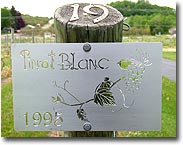 We pulled into
Werner Kuehnis’ Island View Vineyard, just down the road
from Chateau Grand Traverse, and it was immediately obvious that the
vines growing right out in his front yard receive immaculate care.
Planted in 1995, it’s the oldest Pinot Blanc vineyard in Michigan, and
one Ulbrich is intimately familiar with, having worked with it for years
while at Peninsula Cellars. Swiss native Kuehnis has spent years
retraining the vines, which are planted “the wrong way,” with an eastern
exposure. The vines are trained with a standard trellis system, so that
the fruit is on the south side; the vineyard has also been “re-trunked”
a couple of times, due to winter freeze damage. (Low shoots are
purposely left on the vine for insurance in such instances.) The sample
we tasted showed amazing intensity of fruit, considering that the site
is a little over one acre in size, and yet produces four to five tons,
depending on the vintage. Here’re my “snapshot” impressions:
We pulled into
Werner Kuehnis’ Island View Vineyard, just down the road
from Chateau Grand Traverse, and it was immediately obvious that the
vines growing right out in his front yard receive immaculate care.
Planted in 1995, it’s the oldest Pinot Blanc vineyard in Michigan, and
one Ulbrich is intimately familiar with, having worked with it for years
while at Peninsula Cellars. Swiss native Kuehnis has spent years
retraining the vines, which are planted “the wrong way,” with an eastern
exposure. The vines are trained with a standard trellis system, so that
the fruit is on the south side; the vineyard has also been “re-trunked”
a couple of times, due to winter freeze damage. (Low shoots are
purposely left on the vine for insurance in such instances.) The sample
we tasted showed amazing intensity of fruit, considering that the site
is a little over one acre in size, and yet produces four to five tons,
depending on the vintage. Here’re my “snapshot” impressions:
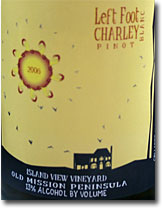 2006 Left Foot Charley Old Mission Peninsula Pinot Blanc Island View
Vineyard Tank Sample, 13% alc.: Pale straw color, with piney green
apple flavors and aromas, underscored with nice minerality; medium-full
body, with good cut and viscosity and excellent intensity. Rich, round
and quite tasty; I’ll happily buy this when it’s released.
2006 Left Foot Charley Old Mission Peninsula Pinot Blanc Island View
Vineyard Tank Sample, 13% alc.: Pale straw color, with piney green
apple flavors and aromas, underscored with nice minerality; medium-full
body, with good cut and viscosity and excellent intensity. Rich, round
and quite tasty; I’ll happily buy this when it’s released.
We also took a gander at Werner’s “private vineyard” in his side plot,
planted to Sauvignon Blanc, Gewurztraminer and Merlot exactly as it
would be in Switzerland, with southern exposure and manicured precision.
He vinifies the wines himself in his garage, which Bryan says is very
well appointed.
From there, we walked around to the back of the Kuehnis Estate, over the
crest of a moderate slope, and found ourselves standing at the eastern
border of the Tale Feathers Vineyard, owned by Gary and Theresa Wilson
and planted to Pinot Grigio with a northern exposure. According to
Bryan, the P.G. ripens early and fast, a definite plus in this
neighborhood, and he expects big things from this 6th year, 3rd crop
vineyard.
From there, we piled back into the car and made the short drive to Tom Scheuerman’s Seventh Hill Farms, where Bryan sources his best Riesling
grapes. He agrees with Sean O’Keefe of
Chateau Grand Traverse that Riesling is the varietal that will
put the region “on the map,” adding that he thinks it compares favorably
with Rhineland-Palatinate in Germany rather than Alsace. He says he
picks Riesling purely on the acidity, striving for less alcohol but more
intensity each year. Ulbrich has been working with this particular
vineyard since it was planted in 1997, and when Peninsula Cellars let it
go, he stepped into the breach. It has two blocks with southern and
western exposures planted with different, fairly high vigor clones (239
and 198), and according to Bryan, “…as long as he (Scheuerman) is in
charge it will be the standard for Riesling in America.” When one
observer commented on the irrigation hoses throughout the vines, it was
explained that they are necessary because Riesling needs a lot of water
at bloom and veraision. He then pulled out glasses and poured us a
sample of just what this vineyard produces.
 2006 Left Foot Charley Old Mission Peninsula Riesling Tank Sample, 9% alc., 2% residual sugar: Pale straw color, with lovely aromatics of
honeysuckle and red apple, following through on the palate with some
added minerality and good acids; medium bodied and almost delicate, but
with excellent intensity, a great mouth feel and a long finish.
2006 Left Foot Charley Old Mission Peninsula Riesling Tank Sample, 9% alc., 2% residual sugar: Pale straw color, with lovely aromatics of
honeysuckle and red apple, following through on the palate with some
added minerality and good acids; medium bodied and almost delicate, but
with excellent intensity, a great mouth feel and a long finish.
Bryan says that halting the fermentation is responsible for this kind of
mouth feel (the cooling jackets on the new fermentation tanks are
perfectly suited for this), adding that he wants to fashion “a glass
doll” with his Riesling, but one that won’t break. He has certainly
succeeded with this wine; it’s already lovely and shows great promise.
Our final stop was at the 80-acre farm of Leonard and Eddie Ligon, who
are thoroughly dedicated to their vineyards, orchards and their workers
as well. They’ve built a house on the farm for their foreman because
Leonard wants to keep the same good people, rather than have to depend
on transient labor. The Ligons grow Pinot Grigio and Gewurztraminer for
Left Foot Charley, and there’s a newly planted Merlot vineyard as well.
Ligon employs the
Scott Henry Trellis System for all of the grapes that he grows
for LFC, a nine-wire setup that allows for four canes per vine instead
of the customary two, which are trained both high and low, encouraging
the vigorous vines to produce quality fruit from a larger crop.
The entire operation is meticulously managed and very impressive to
explore.
 Afterwards, I was so taken with what we’d seen and tasted, that when I
found three bottles of Left Foot Charley at the venerable Blue Goat wine
shop in Traverse City, I picked them up and we tasted them after
returning home. Here’re my notes:
Afterwards, I was so taken with what we’d seen and tasted, that when I
found three bottles of Left Foot Charley at the venerable Blue Goat wine
shop in Traverse City, I picked them up and we tasted them after
returning home. Here’re my notes:
Find
Left Foot Charley Wines
2005 Left Foot Charley Old Mission Peninsula Pinot Grigio, 12% alc.,
$15.29: Pale straw in color, with green apple and citrus flavors and
aromas shaded with a hint of herb and an undertone of mineral; good cut
and concentration and decidedly dry. A very satisfying white, and on
this occasion, a fine match for some roast duck. More, please…
2004 Left Foot Charley Old Mission Peninsula Riesling, 12% alc.,
$17.69: Medium straw color, and showing excellent varietal
character, with stony mineral and just a hint of petrol over rich
apple-like fruit shaded with a hint of lime. Medium to medium-full
bodied and decidedly dry, with more weight, complexity and concentration
than the vast majority of Michigan Riesling and a long, lingering
finish. Rich, pungent and delicious, this is as good as, if not better
than, the
1999 Wyncroft Lake Michigan Shore Riesling Avonlea Vineyard,
our previous standard for dry Michigan Riesling. Drinking beautifully
now, with great promise for further development.
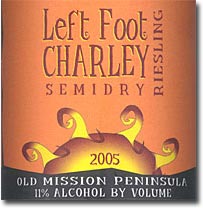 2005 Left Foot Charley Old Mission Peninsula Semidry Riesling, 11% alc., 375 ml, $17.69: Pale straw color; rich and ripe, with red and
green apple flavors and aromas underscored with nice minerality and with
a sweetness that falls somewhere between Kabinett and Spatlese levels.
Medium to medium-full body, with excellent balance and acidity and good
length; very nice with panko and crushed walnut encrusted Tilapia. I
wish I could drink every one of these wines on a regular basis.
2005 Left Foot Charley Old Mission Peninsula Semidry Riesling, 11% alc., 375 ml, $17.69: Pale straw color; rich and ripe, with red and
green apple flavors and aromas underscored with nice minerality and with
a sweetness that falls somewhere between Kabinett and Spatlese levels.
Medium to medium-full body, with excellent balance and acidity and good
length; very nice with panko and crushed walnut encrusted Tilapia. I
wish I could drink every one of these wines on a regular basis.
37 year old Bryan Ulbrich is “looking at 10-years to really establish
the label,” and based on the wines that we’ve sampled, it’ll
take a really big meteor hit or the onset of another ice-age to derail
him from his goal, and we’ll be following his progress closely. Left
Foot Charley is destined to become one of the standard bearers for
Michigan wineries, proving that we CAN produce world-class wine here in
the Winter Water Wonderland, and is undoubtedly the most exciting
Michigan winery we've come across since Wyncroft.
Reporting from Day-twah,


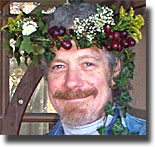
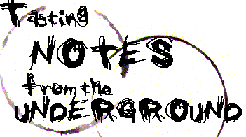

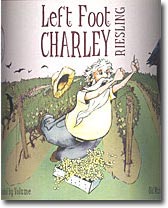 How’s this for an audacious proposal? Build an urban winery in
Traverse City, with no vineyard holdings of your own, sell 80% of your production
from the tasting room and mailing list, focus on Riesling, Pinot Blanc,
Pinot Grigio, and Gewurztraminer with the unabashed goal of producing
the best wines from those varietals in America, and make money doing it.
Sound crazy? Maybe so, but that’s exactly what they’re shooting for at
How’s this for an audacious proposal? Build an urban winery in
Traverse City, with no vineyard holdings of your own, sell 80% of your production
from the tasting room and mailing list, focus on Riesling, Pinot Blanc,
Pinot Grigio, and Gewurztraminer with the unabashed goal of producing
the best wines from those varietals in America, and make money doing it.
Sound crazy? Maybe so, but that’s exactly what they’re shooting for at
 Originally
established as the Northern Michigan Asylum in 1885, it grew from
the single “Kirkbride Building,” now known as Building 50, to a
sprawling complex of 60 acres of buildings on an even larger plot of
land. The original concept was to treat mental patients with quiet
country life in a self-sustaining community involving extensive farming
operations that were finally discontinued in the 1950s. The complex was
closed in 1989, fell into disrepair and was scheduled for demolition,
which was avoided due to the efforts of local preservation groups. Now
known as
Originally
established as the Northern Michigan Asylum in 1885, it grew from
the single “Kirkbride Building,” now known as Building 50, to a
sprawling complex of 60 acres of buildings on an even larger plot of
land. The original concept was to treat mental patients with quiet
country life in a self-sustaining community involving extensive farming
operations that were finally discontinued in the 1950s. The complex was
closed in 1989, fell into disrepair and was scheduled for demolition,
which was avoided due to the efforts of local preservation groups. Now
known as  Speaking of ambitious, the Ulbrichs hope to have their facility open by
July 1st, a little over a month from this writing, and while the
building itself is coming along nicely, no equipment has been installed
as of yet. (So far, the LFC wines have been made in “a glorified
garage,” giving further evidence that
Speaking of ambitious, the Ulbrichs hope to have their facility open by
July 1st, a little over a month from this writing, and while the
building itself is coming along nicely, no equipment has been installed
as of yet. (So far, the LFC wines have been made in “a glorified
garage,” giving further evidence that
 We pulled into
Werner Kuehnis’ Island View Vineyard, just down the road
from Chateau Grand Traverse, and it was immediately obvious that the
vines growing right out in his front yard receive immaculate care.
Planted in 1995, it’s the oldest Pinot Blanc vineyard in Michigan, and
one Ulbrich is intimately familiar with, having worked with it for years
while at Peninsula Cellars. Swiss native Kuehnis has spent years
retraining the vines, which are planted “the wrong way,” with an eastern
exposure. The vines are trained with a standard trellis system, so that
the fruit is on the south side; the vineyard has also been “re-trunked”
a couple of times, due to winter freeze damage. (Low shoots are
purposely left on the vine for insurance in such instances.) The sample
we tasted showed amazing intensity of fruit, considering that the site
is a little over one acre in size, and yet produces four to five tons,
depending on the vintage. Here’re my “snapshot” impressions:
We pulled into
Werner Kuehnis’ Island View Vineyard, just down the road
from Chateau Grand Traverse, and it was immediately obvious that the
vines growing right out in his front yard receive immaculate care.
Planted in 1995, it’s the oldest Pinot Blanc vineyard in Michigan, and
one Ulbrich is intimately familiar with, having worked with it for years
while at Peninsula Cellars. Swiss native Kuehnis has spent years
retraining the vines, which are planted “the wrong way,” with an eastern
exposure. The vines are trained with a standard trellis system, so that
the fruit is on the south side; the vineyard has also been “re-trunked”
a couple of times, due to winter freeze damage. (Low shoots are
purposely left on the vine for insurance in such instances.) The sample
we tasted showed amazing intensity of fruit, considering that the site
is a little over one acre in size, and yet produces four to five tons,
depending on the vintage. Here’re my “snapshot” impressions: 

 Afterwards, I was so taken with what we’d seen and tasted, that when I
found three bottles of Left Foot Charley at the venerable Blue Goat wine
shop in Traverse City, I picked them up and we tasted them after
returning home. Here’re my notes:
Afterwards, I was so taken with what we’d seen and tasted, that when I
found three bottles of Left Foot Charley at the venerable Blue Goat wine
shop in Traverse City, I picked them up and we tasted them after
returning home. Here’re my notes: